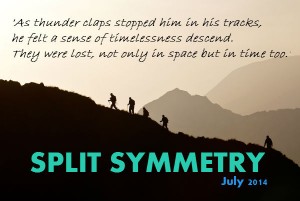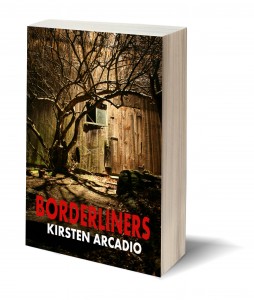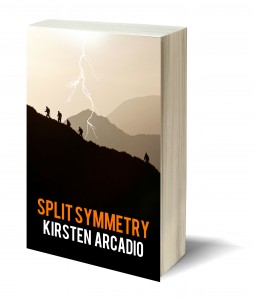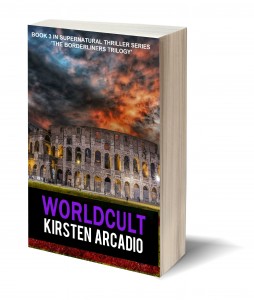 The writing of Split Symmetry was an odd experience. It was a rollercoaster, on both an emotional and spiritual level. It was a process which changed my approach to novel writing, and which changed me. It was my ‘via crucis’, the road which would decide if this novel-writing business was for me.
The writing of Split Symmetry was an odd experience. It was a rollercoaster, on both an emotional and spiritual level. It was a process which changed my approach to novel writing, and which changed me. It was my ‘via crucis’, the road which would decide if this novel-writing business was for me.
In many ways, it is my true debut. Borderliners was a tale which exercised my mind and troubled my heart, but an easier story in many ways to categorise and get hold of. A learning curve, it was also a novel which was rewritten many times before it was done (and still, I wonder, is it really done?). It was my John the Baptist, the one who was to pave the way, my lost leader (all too important in the indie publishing trenches), my trial run. Although I may need to revisit at some point, maybe to tweak a bit for a second edition, for now my protagonist needed to move on.
So, there was a fork in the road, a Faber Academy course in the middle and many many game changing experiences along the way. I am not the writer I was when I stood at the start of Split Symmetry, thinking it would be easy, thinking I’d got my technique down. Not so.
Turns out I chose a difficult task to execute.
Blood sweat and tears didn’t cover it. I wrote every day and read as much as I could about the writing process. I bared all to my fellow writers on the Faber course I followed. They were merciless – actually we were all merciless with each other (don’t worry, we’re all still friends), and to the benefit of everyone. I ended up living my characters like a method actor, in order to understand their motivations, their weaknesses and their character arcs. It wasn’t easy. Considering one of them has a condition which some might consider to be borderline psychosis (although I don’t, not really), this could have been a dangerous exercise.
But I lived to tell the tale, and finish the novel.
What I ended up with was a complex beast, and truly a story with many layers – probably more than this debut writer was really ready to tackle. It has had so many different reactions from readers, many polarised. Some people relate to the story as a pure action adventure, like the Poseiden Adventure. Others are drawn by the relationships between the main characters: two sets of siblings, all of them damaged, all of them with everything and nothing to play for. Others still, turned the pages to find out the conclusion to the story within the story, the dark secret one set of siblings has, which repeats on them forever more. For me, it was the spiritual, philosophical and metaphysical undertones to the story which exercised my mind most of all.
I enjoyed following Dr Elena Lewis into the next chapter of her life. It took me to places I wouldn’t have predicted as both she and her co-protagonist, James Dennison, took on lives of their own during the writing of the book. In some ways this was unnerving, but in others it was heartening: I had found my artistic distance in this book, the point where what I produced became something different, something unexpected.
Now, the tale is ready to be released.
Split Symmetry, available from 27 June 2014 on Amazon





